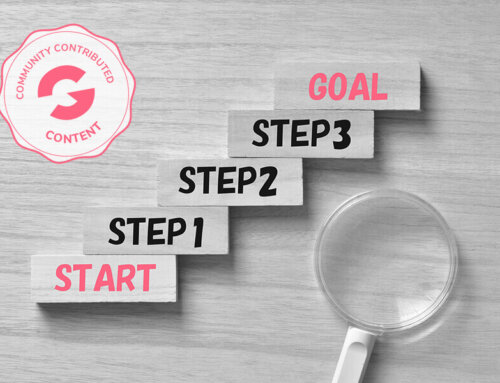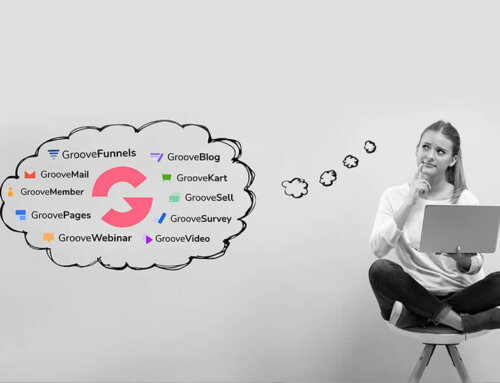Your Content Marketing Strategy is Virgil and Your Customer is Dante (but with less torture and fewer demons)
Do you ever feel like the kid in Sixth Sense? Except when you pull your covers to your face and confide in Bruce Willis you whisper, “I see content marketing.”
It’s true, you do. But then so does everyone else.
The stuff is all over the place.
While seeing content marketing is a terrible super power, it’s invaluable for marketers and businesses.
But what really is content marketing? If you’re publishing material and pushing ads every day, is that not marketing with content?
So let’s get one thing straight; there is a marked difference between content marketing and content publishing. Many people and businesses are content publishing, as in they are publishing content in an effort to attract an audience with the sheer volume of articles they produce.
Kind of like setting a bunch of mousetraps haphazardly around a kitchen with some bait, and hoping one of them works.
There is nothing in itself wrong with content publishing. However, if you actually want your readers to become customers, you’ll need to focus on content marketing.
Content marketing is content publishing dressed up for the ball
It’s done the extra work to attract attention and make itself memorable. In content marketing you still need to produce the… well… content, but behind each article you post, every infographic you publish, and many of the images you promote, your goal is to provide value, a connection, and make the audience want to act.
So perhaps the better question is…
WHY is content marketing so important?
There is a lot of noise in the world, particularly online. Many customers are used to the constant din of content and they’ll just read something quickly and scroll on. You have to make an impact on someone who may or may not already be dead inside.
It is only with effective content marketing that a business can make the readers pause, think, act and maybe even return to life like some kind of consumer zombie (don’t judge, zombies have credit cards too).
A desired action might be signing up for a newsletter, buying a product, or sharing an article. If you’re very good they may even sacrifice a goat. Though that level of marketing died out with the ancient Greeks.
Speaking of obscure literary references…
You are the Virgil to your customer’s Dante
For the non-nerds out there, this means you’re the customer’s guide. You must lead them through each step of the journey they will go on throughout your content marketing.
In the end the action will benefit both the customer and the business since good content marketing uses strategies to understand what the customer needs and wants. As a result their content marketing will be more valuable and actionable than another business that puts out three times the amount of content with no plan.
As you go deeper into their psyche it will be up to your content to give them the desire to push further toward what they ultimately want or need. Luckily there are three main stages you need to know about, not nine.
What are these levels?
First is the discovery level. This one is pretty straightforward. Your customer realizes they have a problem and they are searching for an answer.
The second phase of the customer’s journey is the consideration stage. This is where you’ll show them all the reasons why what you are offering will assuage their burning need.
Finally, the customer will be faced with the decision stage. Using that which most impacted them from the consideration stage, and the overarching pain point in phase one, you’ll help them reach the conclusion that your product or service is indeed a smart purchase.
How do you make your content marketing align with the customer’s journey? Let’s take a look at those stages again and get more specific.
During that first decision phase you have to make the customer realize they are missing something. Hit them in their pain points. Perhaps they were searching for something and they find your content that reasserts that yes, they need what you offer.
Or maybe you caused them to discover they needed something with a cleverly-titled blog post. The moment of discovery can happen at any time, but it’s important that your content is there, ready to guide them to the next step.
Now you’ve brought them into the chamber of consideration. They know they have an issue and need extra care.
Offer them a chair, a soda, and then show what you can offer as a solution to their woes. Whether it’s a product like a standing desk, or a service to make their workflow easier, you need to find what clicks with them.
There is no one-size-fits-all with this method. You have to take the person in front of you, their experiences, age, and other personal factors into consideration. If you’ve done your job correctly, you will funnel them to all the right resources and answer all their questions. Being able to do this effectively makes all the difference in turning a casual reader into a customer.
Of course, you’re not there quite yet. You still have to get them out of the final challenge. That’s right, it’s the dreaded decision valley.
The good news is that the hardest work is behind you. They have all the information. And yet the hurdle of spending money or performing another action is not easy for some. They need a little push, some affirmation that they are right to keep going.
By now you should know what is driving them, which considerations weighed most heavily to get them to this stage. Reiterate those points. Remind the customer why they need your product or service. Don’t make it complicated. Just state the facts as you see them. The customer is always right, and you’re simply pointing that out.
Content marketing only works if you are providing value. You provide value by helping the customer realize their needs and desires. So, with clever content marketing strategies you can stand out, sell more, and help your customers on a deeper level.





Leave A Comment